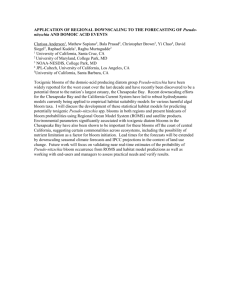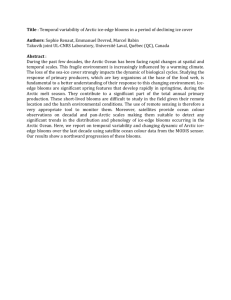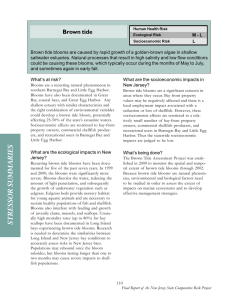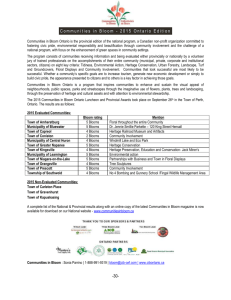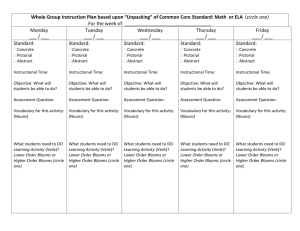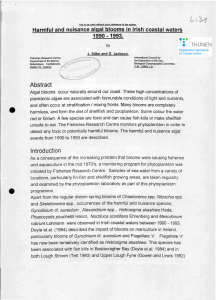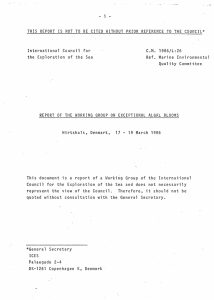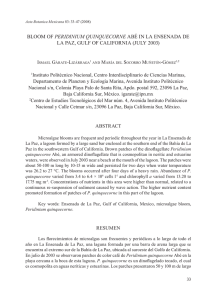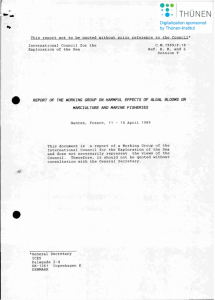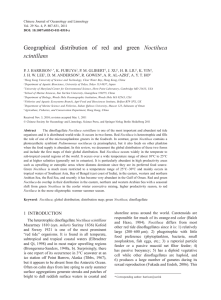Physical controls on the formation, development, and
advertisement
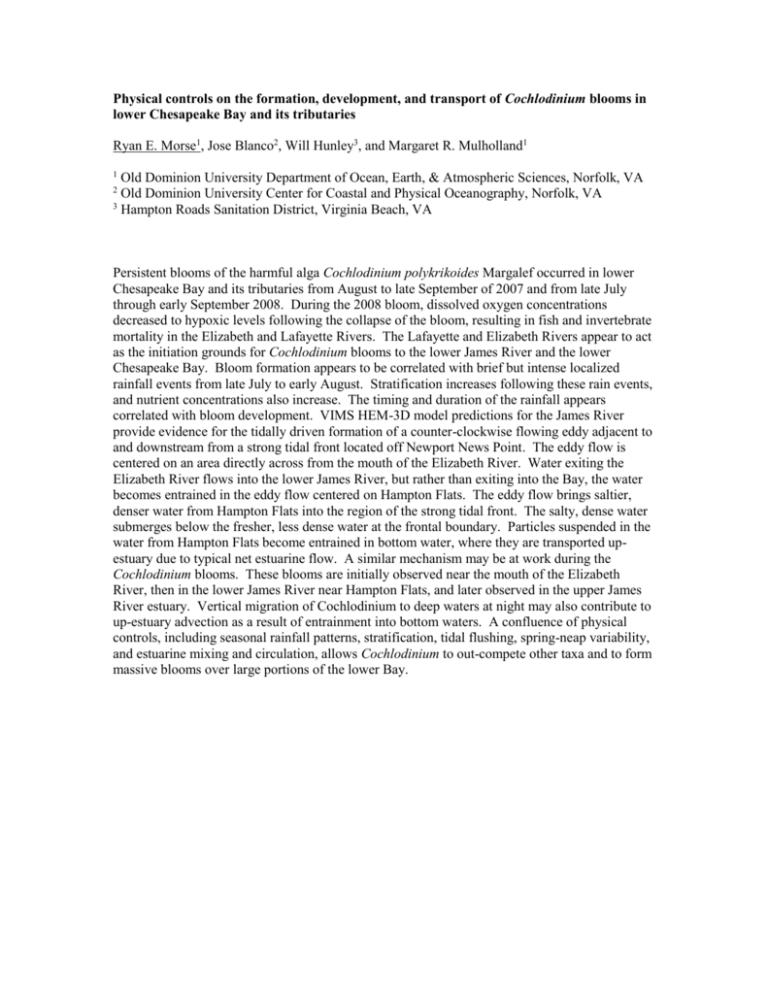
Physical controls on the formation, development, and transport of Cochlodinium blooms in lower Chesapeake Bay and its tributaries Ryan E. Morse1, Jose Blanco2, Will Hunley3, and Margaret R. Mulholland1 1 Old Dominion University Department of Ocean, Earth, & Atmospheric Sciences, Norfolk, VA Old Dominion University Center for Coastal and Physical Oceanography, Norfolk, VA 3 Hampton Roads Sanitation District, Virginia Beach, VA 2 Persistent blooms of the harmful alga Cochlodinium polykrikoides Margalef occurred in lower Chesapeake Bay and its tributaries from August to late September of 2007 and from late July through early September 2008. During the 2008 bloom, dissolved oxygen concentrations decreased to hypoxic levels following the collapse of the bloom, resulting in fish and invertebrate mortality in the Elizabeth and Lafayette Rivers. The Lafayette and Elizabeth Rivers appear to act as the initiation grounds for Cochlodinium blooms to the lower James River and the lower Chesapeake Bay. Bloom formation appears to be correlated with brief but intense localized rainfall events from late July to early August. Stratification increases following these rain events, and nutrient concentrations also increase. The timing and duration of the rainfall appears correlated with bloom development. VIMS HEM-3D model predictions for the James River provide evidence for the tidally driven formation of a counter-clockwise flowing eddy adjacent to and downstream from a strong tidal front located off Newport News Point. The eddy flow is centered on an area directly across from the mouth of the Elizabeth River. Water exiting the Elizabeth River flows into the lower James River, but rather than exiting into the Bay, the water becomes entrained in the eddy flow centered on Hampton Flats. The eddy flow brings saltier, denser water from Hampton Flats into the region of the strong tidal front. The salty, dense water submerges below the fresher, less dense water at the frontal boundary. Particles suspended in the water from Hampton Flats become entrained in bottom water, where they are transported upestuary due to typical net estuarine flow. A similar mechanism may be at work during the Cochlodinium blooms. These blooms are initially observed near the mouth of the Elizabeth River, then in the lower James River near Hampton Flats, and later observed in the upper James River estuary. Vertical migration of Cochlodinium to deep waters at night may also contribute to up-estuary advection as a result of entrainment into bottom waters. A confluence of physical controls, including seasonal rainfall patterns, stratification, tidal flushing, spring-neap variability, and estuarine mixing and circulation, allows Cochlodinium to out-compete other taxa and to form massive blooms over large portions of the lower Bay.
